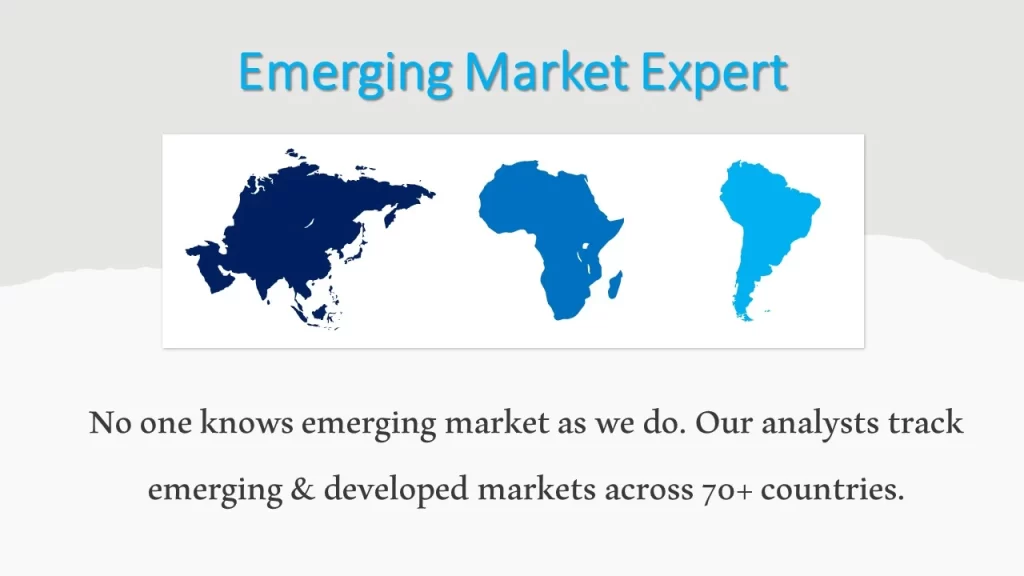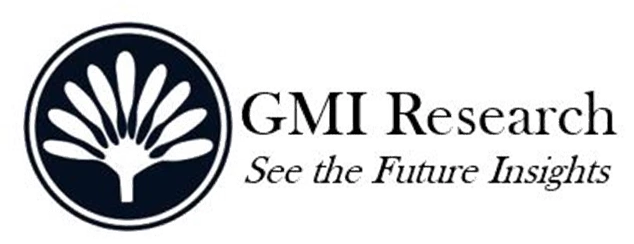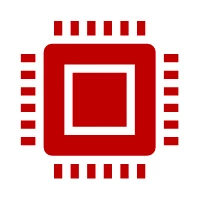Narrowband IoT (NB-IoT) Chipset was valued at USD 1.7 billion in 2024 and is forecast to touch USD 22.4 billion in 2032, and the market is expected to grow at a whopping CAGR of 38.4% from 2025-2032, driven by rising demand for reliable connectivity along with the widespread IoT adoption in diverse applications.
Major Market Drivers and Trends
The narrowband IoT offers advanced cellular functionalities and enhances M2M communication by offering improved network coverage and lower energy consumption. Unlike older technologies like Bluetooth, it leverages cellular networks to ensure superior coverage and penetration. The narrowband IoT chipset’s energy efficiency is essential for ensuring that devices can be deployed for long periods without compromising performance.
IoT infrastructure in smart cities connects objects and devices through multiple connectivity options. By using a smart application platform, cities can manage IoT services in one place which significantly reduces overall service expenses. Many smart city authorities are now focused on expanding IoT adoption to enhance services like waste management and energy usage tracking in public buildings. The increasing adoption of contextual analysis to deliver real-time information to authorities and citizens is driving market growth which in turn creates new opportunities.
The narrowband IoT (NB-IoT) chipsets market size growth is fueled by the broader adoption of IoT in diverse applications, with the increasing need for affordable and scalable solutions further accelerating the adoption of the narrowband IoT. With organizations aiming to enhance their operations and leveraging data from connected devices, the demand for reliable chipsets with low energy consumption is on the rise. The increasing IoT device applications across diverse industries including manufacturing and healthcare is driving the growing need for narrowband IoT chipsets. These chipsets support the efficient connection of numerous IoT devices which enables streamlined data gathering and monitoring.
Why Purchase a Standard Report When You Can Customize this Report
Please Let us know your Customization Requirements
Narrowband IoT offers strong coverage both indoors and outdoors or even underground which makes it ideal for battery-powered applications which transmit data intermittently. These benefits have fueled the widespread use of narrowband IoT technology in several key areas including smart parking and management systems. Many organizations are now in the process of piloting and evaluating the implementation of the technology for various evolving use cases.
Continued advancements in technology combined with the growth of cellular networks are creating opportunities for narrowband IoT applications which boost innovation and market development. Ongoing innovations in the technology including better security and reduced energy usage are driving the narrowband IoT (NB-IoT) chipsets market growth. Integrating narrowband IoT with emerging technologies such as AI is opening up new possibilities for data analysis and automation. Advancements in 5G technology are further driving growth in the market by enabling new applications that require reliable communication. This could also help address connectivity challenges in rural regions.
However security concerns are hindering market growth as the surge in connected devices increases the vulnerability to cyberattacks and data breaches. The failure to adequately resolve security challenges could hinder their widespread adoption and slow down market growth. To address these concerns and broaden its reach across various applications, the market must adopt robust security protocols and gain trust in its capabilities.
Deployment Type Insights: In-band segment is estimated to register the largest market share
The in-band segment captured the largest market share primarily because it leverages the current LTE spectrum which enables smooth integration with existing cellular networks. Telecom operators may effectively roll out narrowband IoT by utilizing the in-band deployment technique which eliminates the need for extra spectrum thereby reducing time and financial expenditure. In-band deployment provides strong coverage that makes it ideal for applications like smart metering and asset tracking. The strong demand for affordable and compatible solutions positions this segment to maintain its leadership in the market in the years to come.
The guard band category benefits from the existing cellular network architecture by making use of idle frequency bands among active channels. Utilizing these bands allows for effective spectrum management and affordable deployment of narrowband IoT services without requiring extra frequency resources. With network infrastructure improvements to accommodate more devices, the demand for guard band solutions is projected to rise which contributes to market segment growth.
Device Insights: Wearable devices segment is expected to capture the largest market share
The segment captured the largest market share fueled by the increasing demand for devices such as smartwatches and fitness trackers. Narrowband IoT technology offers significant benefits to these devices as it provides low energy usage and broad coverage that are critical for extended battery life along with consistent connectivity.
The smart metering category is also experiencing growth with narrowband IoT technology being ideal because of its low energy usage and capability to support a high volume of connected devices. As the demand for reliable metering systems grows, narrowband IoT’s scalability and affordability will drive its broader adoption by service providers or utilities. The smart metering industry is estimated to experience rapid growth which leads to improved energy management and better resource tracking capabilities.
The smart appliances category includes devices designed to track the location of various objects. These devices are usually powered by batteries and use narrowband IoT for network communication.
Vertical Insights: Energy and utilities segment is projected to register the largest revenue share
The energy and utilities sector held the largest market revenue share due to the extensive use of narrowband IoT for applications like smart metering and infrastructure monitoring. Smart meters which provide real-time data on electricity or water usage gain significant advantages from narrowband IoT’s energy efficiency and expansive coverage.
The automotive and transportation sector is also growing rapidly driven by the rising need for connected devices along with smart transportation systems. Narrowband IoT is essential for facilitating V2X communication which enhances road safety and improves transportation efficiency.
The healthcare industry is also experiencing greater adoption of narrowband IoT as it provides valuable benefits for remote health monitoring and more efficient healthcare services. Narrowband IoT chipsets are perfect for medical applications as they offer wide coverage and dependable connectivity for transmitting small amounts of data.
Narrowband IoT is also an ideal technology for the consumer electronics sector due to its low energy usage which is crucial for devices used in communication and productivity.
Regional Insights: Europe is forecast to dominate the market share
Europe captured the highest revenue share due to its effective regulatory policies that have supported the widespread implementation of narrowband IoT technologies. Multiple regulations focused on data security and protection are designed to secure personal information. The European Commission has further published a recent recommendation which provides operational standards for RFID applications in alignment with data protection and privacy regulations.
North America is a key market driven by the presence of leading solution providers and a consumer base with high technological expertise. Its swift embrace of new technologies is further contributing to remarkable market growth.
Asia Pacific is set for substantial growth driven by government efforts to develop smart cities and enhance internet infrastructure. China dominates the market followed by India fueled by advancements in telecommunications infrastructure. The strong and rapidly expanding telecommunications infrastructure especially in 5G adoption, creates a solid foundation for extensive narrowband IoT network installations.
Top Market Players
Various notable players operating in the market include Huawei Technologies Co., Ltd., Qualcomm Technologies, Inc., Nordic Semiconductor, Samsung Electronics, Intel Corporation, MediaTek Inc., Altair Semiconductor, CommSolid GmbH, Sierra Wireless, and SEQUANS, among others. The market is highly competitive and dynamic with numerous players competing for dominance. These market participants are striving to strengthen their market position through strategic initiatives like partnerships and acquisitions.
Key Developments:
-
- In 2024, BT rolled out a narrowband IoT network in the United Kingdom which enabled the connection of IoT devices with low data requirements including water sensors and streetlights through a smart network.
- In 2024, Iridium introduced Project Stardust which is an innovative satellite connectivity powered by narrowband IoT and built on 3GPP standards for D2D communication.
- In 2024, Airtel Business revealed that it will supply connectivity for more than twenty million smart metering installed by Adani Energy Solutions Limited.
- In 2020, Nordic Semiconductor entered into a partnership with Qorvo, with an aim to expand the IoT portfolio with two RF front-end modules of Qorvo. Through this partnership, the companies also aim to develop cellular IoT solutions using the Qorvo’s RFFE modules.
- In 2019, Samsung Electronics singed an expansion contract with KT Corporation (KT) to offer public safety (PS-LTE) network solutions based on the 3GPP standard Release 13 for the major regions in South Korea. Moreover, the companies also aimed to deliver world’s first Narrowband Internet of Things (NB-IoT) service through the PS-LTE network.
- In 2019, Qualcomm Technologies announced its next-generation modem purpose-built for Internet of Things (IoT) applications which include health monitors, smart city sensors, asset trackers, security systems, and smart meters, as well as a range of wearable trackers. The new Qualcomm® 9205 LTE modem is used to build cellular-enabled IoT products and services in a single chipset, such as global multimode LTE category M1 (eMTC) and NB2 (NB-IoT) as well as 2G/E-GPRS connectivity and application processing.
Segments covered in the Report:
The global Narrowband IoT Chipset Market has been segmented on the basis of deployment type, device, vertical, and key regions. Based on deployment type, the market is segmented into stand-alone, guard band, and in-band. Based on device, the market is segmented into smart parking, smart meters, trackers, alarms and detectors, smart streetlights, smart appliances, wearable devices, and other devices. Based on verticals, the market is segmented into agriculture, automotive and transportation, energy and utilities, healthcare, manufacturing, safety and security, infrastructure, building automation, and consumer electronics.
|
Report Coverage |
Details |
| Market Revenues (2024) |
USD 1.7 billion |
| Market Base Year |
2024 |
| Market Forecast Period |
2025-2032 |
| Base Year & Forecast Units |
Revenues (USD Billion) |
| Market Segment | By Deployment Type, By Device, By Vertical, By Region |
| Regional Coverage | Asia Pacific, Europe, North America, and RoW |
| Companies Profiled | Huawei Technologies Co., Ltd., Qualcomm Technologies, Inc., Nordic Semiconductor, Samsung Electronics, Intel Corporation, MediaTek Inc., Altair Semiconductor, CommSolid GmbH, Sierra Wireless, and SEQUANS, among others; a total of 10 companies covered. |
| 25% Free Customization Available | We will customize this report up to 25% as a free customization to address our client’s specific requirements |
Market Segmentation
Global Narrowband IoT (NB-IoT) Chipset Market by Deployment Type
-
- Stand-Alone
- Guard Band
- In-Band
Global Narrowband IoT (NB-IoT) Chipset Market by Device
-
- Smart Parking
- Smart Meters
- Trackers
- Alarms and Detectors
- Smart Streetlights
- Smart Appliances
- Wearable Devices
- Other Devices
Global Narrowband IoT (NB-IoT) Chipset Market by Vertical
-
- Agriculture
- Automotive and Transportation
- Energy and Utilities
- Healthcare
- Manufacturing
- Safety and Security
- Infrastructure
- Building Automation
- Consumer Electronics
Global Narrowband IoT (NB-IoT) Chipset Market by Region
-
-
North America Narrowband IoT (NB-IoT) Chipset Market (Option 1: As a part of the free 25% customization)
- By Deployment Type
- By Device
- By Vertical
- US Market All-Up
- Canada Market All-Up
-
Europe Narrowband IoT (NB-IoT) Chipset Market (Option 2: As a part of the free 25% customization)
- By Deployment Type
- By Device
- By Vertical
- UK Market All-Up
- Germany Market All-Up
- France Market All-Up
- Spain Market All-Up
- Rest of Europe Market All-Up
-
Asia-Pacific Narrowband IoT (NB-IoT) Chipset Market (Option 3: As a part of the free 25% customization)
- By Deployment Type
- By Device
- By Vertical
- China Market All-Up
- India Market All-Up
- Japan Market All-Up
- Rest of APAC Market All-Up
-
RoW Narrowband IoT (NB-IoT) Chipset Market (Option 4: As a part of the free 25% customization)
- By Deployment Type
- By Device
- By Vertical
- Brazil Market All-Up
- South Africa Market All-Up
- Saudi Arabia Market All-Up
- UAE Market All-Up
- Rest of world (remaining countries of the LAMEA region) Market All-Up
-
Major Players Operating in the Narrowband IoT (NB-IoT) Chipset Market (Option 5: As a part of the Free 25% Customization – Profiles of 5 Additional Companies of your Choice)
-
- Huawei Technologies Co., Ltd.
- Qualcomm Technologies, Inc.
- Nordic Semiconductor
- Samsung Electronics
- Intel Corporation
- MediaTek Inc.
- Altair Semiconductor
- CommSolid GmbH
- Sierra Wireless
- SEQUANS
Frequently Asked Question About This Report
Narrowband Iot Chipset Market [UP1309A-00-0620]
Narrowband IoT (NB-IoT) Chipset is expected to grow at a whopping CAGR of 38.4% from 2025-2032.
Market participants are striving to strengthen their market position through strategic initiatives like partnerships and acquisitions.
Market growth is driven by rising demand for reliable connectivity along with the widespread IoT adoption in diverse applications.
Integrating narrowband IoT with emerging technologies such as AI is opening up new possibilities for data analysis and automation.
Related Reports
- Published Date: Jan-2025
- Report Format: Excel/PPT
- Report Code: UP1309A-00-0620
Licensing Options
Single-User License:
The report is used by the purchaser (One Individual) only
Multi-User License:Report is shared with maximum 5 users (employees) including the purchaser of the purchasing corporation only
Corporate License:
Report is shared with unlimited user (employees) of the purchasing corporation only
The report is used by the purchaser (One Individual) only
Multi-User License:Report is shared with maximum 5 users (employees) including the purchaser of the purchasing corporation only
Corporate License:
Report is shared with unlimited user (employees) of the purchasing corporation only
Narrowband IoT (NB-IoT) Chipsets Market and Analysis Report – Opportunities and Forecast 2025-2032
$ 4,499.00 – $ 6,649.00
Why GMI Research







